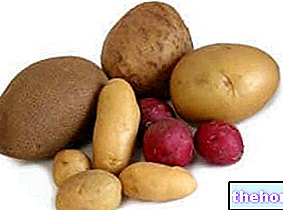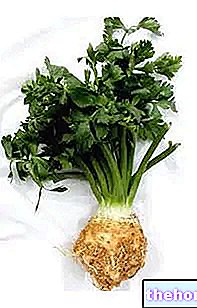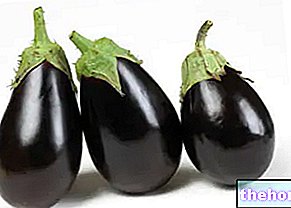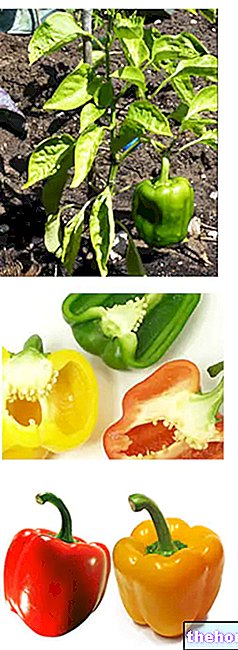Generality
Zucchini and courgette flowers are products of plant origin belonging to the 6th food group. They do not provide a particularly rich or noteworthy nutritional supply but, to their advantage, they offer a rather moderate energy content.

The courgette and courgette flowers are the inflorescence of plants belonging to the Curcubitaceae family and to the genus Cucurbita; the Pumpkin species are very numerous but, in Italy, the flowers are mainly obtained from moschata (butternut squash) and dal maxima. The courgette flowers, on the other hand, are derived from the species Cucurbita pepo.
Cultivation
Pumpkins and courgettes are vegetables commonly sown or transplanted at home; compared to pumpkin, courgette needs a few more tricks. It is essential that the soil is well worked, draining, rich in nitrogen and never devoid of calcium, phosphorus, potassium; the pumpkin "is satisfied" with a less rich soil but its absorption capacity further impoverishes it. For both, irrigation must be constant and systematic, once a day in the summer months and even twice in August, but the water must never wet the leaves or stagnate on the ground. The placement of the plants is fundamental; total sun exposure is required for pumpkins and almost total for zucchini (depending on the climate). To avoid infection by fungi and molds (mainly powdery mildew and downy mildew), it is crucial to ensure the circulation of air and, for the zucchini, to maintain a certain distance between the plants. While the zucchini grows like a bush and occupies a relative space, the pumpkin, being a climber, expands in an almost infesting way.
Both squash and courgette produce male and female flowers; both have a bright yellow color and when open they have a typical "star" shape. The male flowers are recognizable as they detach, with a long stem, directly from the stem of the plant; their pistil is thin and rich in pollen. The female flowers, on the other hand, are attached to the apex of the fruit and have a shorter and more fleshy pistil; being adhered to each other, cutting the flower involves stopping the growth of the fruit, therefore it is not recommended until the moment of harvesting. In the pumpkin it is advisable to consume only the male flowers since the female flowers do not reach the end of the ripening of the fruit and, as already mentioned, removing them would compromise the success of the fruitful harvest.
Purchase
In case you want to buy, the courgette flowers and courgette flowers must have very specific characteristics. To dispel a cliché, it is not necessary for the flowers to be open or closed; the shape does not alter the taste of the food at all, but prepares them for some recipes over others. At the time of purchase it is essential that the courgette and courgette flowers have a bright color in all their shades and boast a consistency enough to keep its shape.

Nutritional values (per 100 g of edible portion)
Dark flowers at the top of the petals or tend to be limp should be discarded. Another determining element is the color of the pistil; this must always be bright yellow and never brown. Browning is an indicator of infection by fungi and molds.
Preparation and recipes
In addition to washing, the only essential intervention in the preparation of courgette and courgette flowers involves the extraction of the pistil; this, if left, can perform a discreet bittering function. In addition, some use male flowers completely depriving them of the stem but, personally, I consider it an "excellent ornamental feature.
The best known recipes involving courgette and courgette flowers are: "fried courgette flowers (battered and / or stuffed)" and "baked stuffed courgette flowers". For the fried and battered ones I suggest using well-opened flowers and a batter based on lager beer and wheat flour; for the filled ones, depending on the content, the batter can also be produced with milk (for example, in the case of introducing cheeses). I recommend frying in peanut oil.
The stuffed zucchini flowers in the oven do not require any coating and can be filled with any delicacy: meats, cheeses, ricotta, fish, molluscs, crustaceans, vegetables etc.
There is no shortage of savory pies made with courgette flowers and courgettes; these must be cut, sautéed in a pan and then inserted in the "appearil of the quiche. Also among the first courses there are many recipes based on courgette flowers; among the tastiest we mention the" Fresh Tagliatelle with courgette flowers, shallots, fresh parsley and saffron ".
Nutritional characteristics
Zucchini flowers are low-calorie vegetables, low in carbohydrates, with a negligible portion of lipids and with just over one and a half grams of protein per 100g of edible portion. The fiber is not mentioned in the table.
As for the mineral salts, it amazes the iron content (obviously, compared to the food group to which it belongs), but they disappoint the others. With regard to vitamins, the content of carotenoids (equivalent retinol - vit. A) to which the yellow color of the courgette and courgette flowers is due is definitely appreciable.
Pumpkin Stuffed Baked flowers
Problems with playing the video? Reload the video from youtube.
- Go to the Video Page
- Go to the Video Recipes Section
- Watch the video on youtube
Other Foods - Vegetables Garlic Agretti Asparagus Basil Beets Borage Broccoli Capers Artichokes Carrots Catalonia Brussels sprouts Cauliflower Cabbage and Savoy cabbage Red cabbage Cucumber Chicory Turnip greens Onion Sauerkraut Watercress Edamame Chives Chanterelles Flour Cassava Flowers Pumpkin Flour Edible Flowers Pumpkin Seasonal Fruits and Vegetables Endive Salads and Salads Strengthening Salad Lettuce Aubergines Vegetables Nettle Pak-Choi Parsnip Potatoes American Potato Peppers Pinzimonio Tomatoes Leeks Parsley Radicchio Turnips Red Turnips Radishes Rocket Shallots Endive Celery Celeriac Seeds Sprouted Spinach Truffle Valianamberi or Jerusalem artichoke laxatives Saffron Pumpkin Zucchini Vegetables - Nutritional properties OTHER VEGETABLE ITEMS Categories Food Alcoholics Meat Cereals and derivatives Sweeteners Sweets Offal Fruit Dried fruit Milk and derivatives Legumes Oils and fats Fish and fishery products Cold cuts S pezie Vegetables Health recipes Appetizers Bread, Pizza and Brioche First courses Second courses Vegetables and Salads Sweets and Desserts Ice creams and sorbets Syrups, liqueurs and grappa Basic preparations ---- In the kitchen with leftovers Carnival recipes Christmas recipes Light diet recipes Women's Day, Mum, Dad Recipes Functional Recipes International Recipes Easter Recipes Recipes for Celiacs Recipes for Diabetics Recipes for Holidays Recipes for Valentine's Day Recipes for Vegetarians Protein Recipes Regional Recipes Vegan Recipes



















-nelle-carni-di-maiale.jpg)








